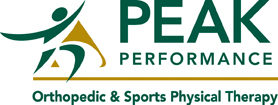How do arthritis supplements work?
What is Glucosamine?
Does Glucosamine help relieve arthritic pain?
What is Chondroitin Sulfate?
Does Chrondroitin Sulfate relieve arthritic pain?
Osteoarthritis (OA) is the most common type of arthritis and is a degenerative disease process that targets the hyaline articular cartilage of several joints throughout the body, most frequently affected are the hands, knees and hips (Madry et al., 2011; Sawitzke, et al., 2008; Yang et al., 2013). OA is characterized by reduced articular function, impaired mobility, joint swelling, and pain (Madry et al., 2011; Yang et al., 2013). OA was once thought to be an inevitable result of the aging process, although current literature recognizes multiple predisposing factors such as genetics, age, sex, obesity, previous joint injury, muscle weakness, and joint hypermobility (2nd Arthritis Study, 2009; Ciccone, 2007; Sawitzke et al., 2008). OA affects more than 20 million Americans and is expected to double over the next decade (Sawitzke et al., 2008, p. 3184). One in three older adults within the U.S. has clinical OA; ambulatory deficits are the most frequent reported functional limitation as a result of OA, more so than any other disease process (Yang, Dube, Eaton, McAlindon, & Lapane, 2013, p. 1691).
There are many pharmacological and non-pharmacological treatment interventions available to individuals suffering from the symptoms of OA. Some of these options may include over-the-counter (OTC) drugs (Tylenol or NSAID’s), prescription medications (NSAID’s- Cox-1, Cox-2; glucocorticoids; DMOAD’s), dietary supplements, nutritional therapy, exercise, weight loss, acupuncture, and physical therapy. Surgical options should be a last resort. Glucosamine and Chondroitin Sulfate are two popular dietary supplements used to help manage the symptoms of OA. An estimated 2.3 billion dollars are spent each year on these supplements worldwide (Glucosamine, 2014; Wandel et al., 2010). Glucosamine is an amino sugar that is the essential building block for glycoaminoglycans, which bind to water and help cushion, protect, and lubricate joint cartilage (Schardt, 2009; Wandel et al., 2010). Chondroitin is a highly hydrophilic, gel-forming polysaccharide that has protective properties to resist compressive forces of joint cartilage (Schardt, 2009; Wandel et al., 2010). Both glucosamine and chondroitin are naturally produced in the body; ingested versions of these sugar macromolecules may be partially absorbed in the intestine. It is highly debatable if any of the absorbed amounts reach the joints.
Wandel et al. (2010) performed a systemic review of 10 quality large scale patient blinded randomized controlled trials showing no statistical significant difference or clinical relevant effect from using chondroitin, glucosamine, or in combination on perceived pain (p.6). Sawitzke et al. (2008) performed a 24 month double-blinded, placebo-controlled study conducted as part of the Glucosamine/Chondroitin Arthritis Intervention Trial (GAIT) which revealed no statistical significant difference between treatment interventions (Glucosamine, Chondroitin, Celecoxib) and joint pain or joint space width (JSW) compared to placebo. (p. 3188). There is recent evidence supporting that regular exercise, including walking, can improve symptoms and functional mobility in people with knee OA compared to supplement users or control group (Joint support, 2014, p. 3). There is little evidence that suggest taking glucosamine and/or chondroitin are harmful for our bodies. Most experts agree if a person suffering from symptoms of OA has less pain and improved mobility from taking these supplements, and they can afford them, there is little harm (Glucosamine, 2014, p.3). Yang et al. (2013) recommend future studies to assess the extent to which these supplements interact with medications and/or assess the potential cause of unintended adverse effects such as hepatotoxicity (p. 1699).
~Sean White, PT, MPT, OCS, CMDT
References:
2nd arthritis study finds glucosamine and chondroitin no better than placebo. (2009). Tufts University Health & Nutrition Letter, 26(11), 1-2.
Ciccone, C.D. (2007). Pharmacology in Rehabilitation (4th ed.). Philadelphia, PA: FA Davis
Glucosamine fails to help arthritic knees. (2014). Tufts University Health & Nutrition Letter, 32(4), 3.
“Joint support” supplements for arthritis. (2014). Harvard Men’s Health Watch, 19(2), 3.
Madry, H., Grün, U. W., & Knutsen, G. (2011). Cartilage repair and joint preservation. Deutsches Aerzteblatt International, 108(40), 669-677. doi:10.3238/arztebl.2011.0669
Sawitzke, A.D., Shi, H., Finco, M.F., Dunlop, D.D., Bingham, C.O., Harris, C.L., & … Clegg, D.O. (2008). The effect of glucosamine and/or chondroitin sulfate on the progression of knee osteoarthritis. Arthritis & Rheumatism, 58(10), 3183-3191. doi:10.1002/art.23973
Schardt, D. (2009). Do arthritis supplements work? Don’t bet your joints on it. Nutrition Action Health Letter, 36(8), 10-11.
Shibing, Y., Dubé, C. E., Eaton, C. B., McAlindon, T. E., & Lapane, K. L. (2013). Longitudinal use of complementary and alternative medicine among older adults with radiographic knee osteoarthritis. Clinical Therapeutics, 35(11), 1690-1702. doi:10.1016/j.clinthera.2013.09.022
Wandel, S., Jüni, P., Tendal, B., Nüesch, E., Villiger, P. M., Welton, N. J., & … Trelle, S. (2010). Effects of glucosamine, chondroitin, or placebo in patients with osteoarthritis of hip or knee: network meta-analysis. British Medical Journal, 341(c4675), 1-9. doi:10.1136/bmj.c4675
